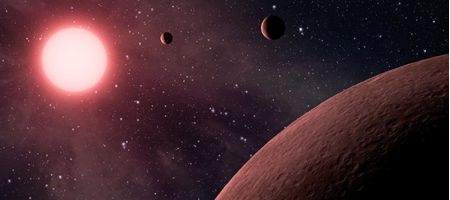NASA’s discovered its tiniest solar system yet, which includes the three smallest exoplanets ever found.

Data from NASA’s Kepler mission has revealed planets that are 0.78, 0.73 and 0.57 times the radius of Earth, orbiting a single star called KOI-961. The smallest is about the size of Mars.
All three are thought to be rocky like Earth, but orbit close to their star, making them too hot for liquid water to exist.
Of the more than 700 exoplanets thus far discovered, only a handful are known to be rocky.
“Astronomers are just beginning to confirm thousands of planet candidates uncovered by Kepler so far,” says Doug Hudgins, Kepler program scientist.
“Finding one as small as Mars is amazing, and hints that there may be a bounty of rocky planets all around us.”
The three planets are very close to their star, taking less than two days to orbit around it. KOI-961 star is a red dwarf with a diameter one-sixth that of our sun, making it just 70 percent bigger than Jupiter.
“This is the tiniest solar system found so far,” says John Johnson, the principal investigator of the research from NASA’s Exoplanet Science Institute.
“It’s actually more similar to Jupiter and its moons in scale than any other planetary system. The discovery is further proof of the diversity of planetary systems in our galaxy.”
And with red dwarfs the most common kind of star in our Milky Way galaxy, the discovery suggests that the galaxy could be teeming with similar rocky planets.
“These types of systems could be ubiquitous in the universe,” says Caltech’s Phil Muirhead. “This is a really exciting time for planet hunters.”






